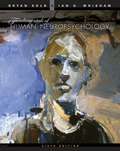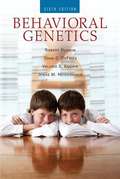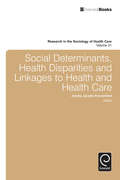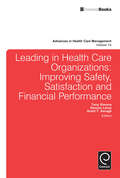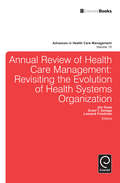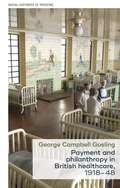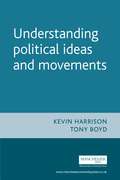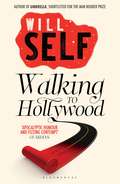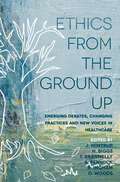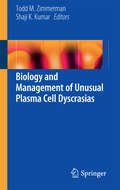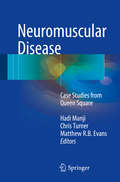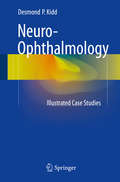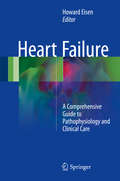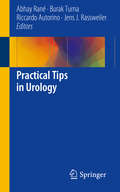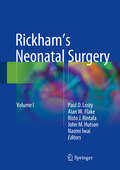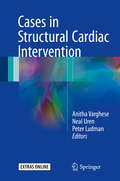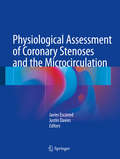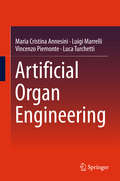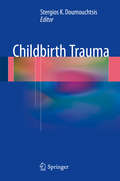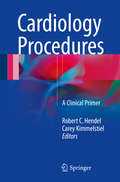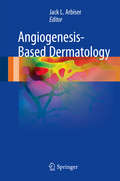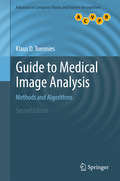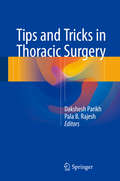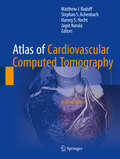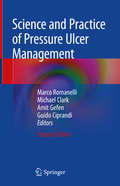- Table View
- List View
Fundamentals of Human Neuropsychology (PDF)
by Ian Q. Whishaw Bryan KolbA scholarly guide to human neuropsychology with a clinical focus throughout. Thorough coverage of brain evolution unites the study of its anatomy and physiology with an understanding of its cognitive, experimental and clinical psychological functions. The 6th edition is updated throughout and has a new 4-colour design.
Behavioral Genetics, 6th Edition (PDF)
by Robert Plomin John C. DeFries Valerie S. Knopik Jenae M. NeiderhiserFor over four decades, Behavioral Genetics has explored the crossroads where psychology and genetics meet, advancing step by step with this dynamic area of research as new discoveries emerge. The new Sixth Edition takes its place as the clearest, most up-to-date overview of human and animal behavioral genetics available, introducing students to the field’s underlying principles, defining experiments, recent advances, and ongoing controversies.
Social Determinants, Health Disparities and Linkages to Health and Health Care (Research in the Sociology of Health Care #31)
by Professor Jennie Jacobs KronenfeldThis volume looks at the key links between social determinants, health disparities and health and health care. There is a particular focus on macro-level systems and micro-level issues, including the examination of issues for patients, carers and providers of care. Coverage includes papers on geographical and place factors and disparities, SES and race/ethnicity factors, chronic care and serious health problems such as HIV/AIDs and kidney transplantation, comparative aspects and perceptions of health disparities. Starting with an introduction that reviews the crucial sociological literature on social determinants and health disparities, papers in this volume go on to cover key themes including ageing, barriers to care, ethnicity, social inequalities, the views of parents on their children's care, and doctor/patient relationships.
Leading In Health Care Organizations: Improving Safety, Satisfaction, and Financial Performance (Advances in Health Care Management #14)
by Tony Simons Hannes Leroy Grant T. SavageHealth care organizations around the world are judged in terms of a health care triple bottom line: ensuring employee and patient safety, maximizing employee and patient satisfaction, and meeting financial goals. Given the increasing burden of chronic diseases, the increasing complexity of medical interventions, and the increasing costs of care, innovative leadership is required to achieve this triple bottom line. The 14th volume of the Advances in Health Care Management research series addresses the links between leadership and safety, satisfaction or financial performance in health care management by exploring questions such as the following: (1) How does leadership impact employee safety? (2) How does leadership affect patient safety? (3) How does leadership impact employee satisfaction? (4) How does leadership affect patient satisfaction? (5) How does leadership affect financial performance? (6) How do health care organizations deploy multi-level leadership to achieve safety goals? Satisfaction goals? Financial goals? Multiple goals? (7) How do health care organization leaders establish and maintain a safety culture? A patient-centered culture? A high performance culture? Combined cultures?"
Annual Review of Health Care Management: Revisiting the Evolution of Health Systems Organization (Advances in Health Care Management #15)
by Leonard H. Friedman Jim Goes Grant T. SavageDramatic changes to the structure of health systems since the 1980s has seen the development of large, integrated health organizations designed to provide scale and scope advantages, improve the quality of care and health outcomes, and provide greater bargaining power relative to payers and large employers. This transition has led to greater interest in understanding hospitals and health systems as complex systems. Two important themes emerged from this effort: 1. Creation and organization of physician-health organizations, and alignment of these organizations with hospital or system structure; and 2. Viewing health care organizations as complex systems, leading to new perspectives on design and management of these organizations. In Volume 15, Reuben McDaniel and L. Robert Burns, authors of two influential articles on these themes from earlier volumes of AHCM, revisit the evolution of health systems organization in light of regulatory and organizational evolution in health care, including the Patient Protection and Accountable Care Act of 2010, and increasing consolidation of health systems. Five additional refereed papers assess the latest evidence on physician integration, complexity, and system redesign.
Payment and philanthropy in British healthcare, 1918–48 (Social Histories of Medicine)
by George Campbell GoslingExamines how commercial medicine operated before the foundation of the NHS, and how this could be compatible with a system based on charity. It challenges the assumptions of historians, politicians and the public.
Understanding political ideas and movements (Understandings)
by Tony Boyd Kevin HarrisonWritten specifically to cover the A2 component of the GCE Government and Politics A-level. Provides a comprehensive introduction to the various political ideas and movements that have shaped the modern world. Underpinned by the work of major thinkers such as Marx, Locke, Weber, Hobbes and Foucault, the book examines at political concepts including the state and sovereignty, the nation and democracy, representation and legitimacy, freedom, equality and rights, obligation and citizenship. Addresses traditional theoretical subjects such as socialism, marxism and nationalism as well as contemporary contemporary movements such as environmentalism, ecologism and feminism. Written in a clear, accessible style, including a number of student-friendly features, such as chapter summaries, key points to consider, definitions and pointers to further sources of information.
Walking to Hollywood: Memories Of Before The Fall
by Will SelfWalking to Hollywood is a dazzling triptych - obsessive, satirical, elegiac - in which Will Self burrows down through the intersections of time, place and psyche to explore some of our deepest fears and anxieties with characteristic fearlessness and jagged humour.'Very Little' is ostensibly the account of a curative journey to Canada and the USA, but in fact the record of a nematode's progress, as the worm of obsession - with scale and packing and the 'stuff' of our lives - bores through a mind in extremesis. 'Walking to Hollywood' is an extreme satire on celebrity, in which the narrator believes that everyone he meets is played by a famous actor, and that only he can solve the mystery of who murdered the movies. 'Spurn Head' leads Self to a tormented sojourn with a madman whose house is sliding over the edge of a cliff, to a game of checkers with Death, and finally to an encounter with one of Swift's immortal Struldbruggs and a march through a tear in time itself. In Walking to Hollywood Will Self pushes memoir to the limits of invention.
Ethics From the Ground Up: Emerging debates, changing practices and new voices in healthcare
by Tula Brannelly Julie Wintrup Hazel Biggs Angela Fenwick Roger InghamThis indispensable textbook explores the ethics of issues from the interpersonal to the political. Expanding on the traditional approach, the editors bring together a range of new perspectives on ethics that reflect the real life experiences and interests of those who work in health and care. Rather than describing abstract ideas and applying them to situations, this authoritative new book uses the everyday situations that occur in health and care as its starting point to examine how we can use our understanding of the moral implications of these to improve practice, relationships and decisions making.
Biology and Management of Unusual Plasma Cell Dyscrasias
by Todd M. Zimmerman Shaji K. KumarThis unique book focuses on the non-myeloma plasma cell dyscrasias. A key resource for this group of diseases, the book features the latest in emerging knowledge and therapeutic developments, including novel therapies. Each disease-specific chapter discusses biology, disease course, and appropriate therapeutic interventions, covering plasma cell leukemia, plasmacytoma, POEMS Syndrome and Castleman's Disease, Waldenström macroglobulinemia, immunoglobin deposition disease, and cryoglobulinemic syndromes, among others. The only book dedicated to this intriguing family of diseases, Biology and Management of Unusual Plasma Cell Dyscrasias will be a long-lasting reference for clinicians and scientists alike.
Neuromuscular Disease: Case Studies from Queen Square
by Hadi Manji Chris Turner Matthew R. EvansThis book provides an accessible guide to neuromuscular disorders using case scenarios from the world-renowned MRC Centre for Neuromuscular Diseases at the National Hospital, Queen Square, London, UK. Fifty genetic and acquired disorders are presented in a practical, easy-to-read format, including those that are common and also some which are rare. Each case covers the history, examination and investigations, including neurophysiology, neuroradiology and neuropathology if appropriate. Discussions of each case include the differential diagnosis, useful clinical pointers and a brief summary of the management of the condition. Neuromuscular Disease: Case Studies from Queen Square is aimed at neurology trainees and consultant general neurologists.
Neuro-Ophthalmology: Illustrated Case Studies (Blue Books Of Neurology Ser. #No. 32)
by Desmond P. KiddThis book presents fifty clinical cases in neuro-ophthalmology, some of which are common and some of which are rare. Each case is presented as a diagnostic and management challenge as found in clinical practice. High quality clinical photographs and images bring the cases to life alongside the diagnostic process and management decisions of an experienced specialist. A short summary of important aspects of the pathogenesis and treatment of each disease finishes each case. Neuro-Ophthalmology: Illustrated Case Studies entertains and instructs the reader and is ideal reading for doctors in training in this area, as well as general consultant neurologists and ophthalmologists.
Heart Failure: A Comprehensive Guide to Pathophysiology and Clinical Care (The\clinics #32-1)
by Howard EisenThis comprehensively covers everything from pathophysiology to the evaluation of patients presenting with heart failure to medical management, device therapy, heart transplantation and mechanical circulatory support, and include relevant cardiac imaging studies such as echocardiograms and magnetic resonance imaging studies which could be seen in their entirety as well as pathology slides, hemodynamic tracings and videos of cardiac surgery such as heart transplants and ventricular assist device implantation. Finally, the book would have videos of patients with heart failure, heart transplants or ventricular assist devices, describing their clinical presentation and experiences. It is structured so that it can be used as a guide by physicians studying for the general Cardiology or Advanced Heart Failure and Cardiac Transplantations Boards.
Practical Tips in Urology
by Abhay Rané Burak Turna Riccardo Autorino Jens J. RassweilerPractical Tips in Urology is a compact, illustrated reference which provides the reader with practical tips and advice in managing day-to-day urological issues encountered in a clinical setting. This book draws on practical experience and offers useful information that is often lacking in didactic textbooks of urology and in journal articles. Practical Tips in Urology provides tips in dealing with urological emergencies, elective surgery and common outpatient consultation problems, among other things. Written by experts in the field, Practical Tips in Urology is key reading for all practicing urologists and residents in training.
Rickham's Neonatal Surgery
by Paul D. Losty Alan W. Flake Risto J. Rintala John M. Hutson Naomi LwaiThis book provides a detailed guide to neonatal surgery and its related disciplines including: fetal medicine, fetal surgery, radiology, newborn anaesthesia, intensive care, neonatal medicine, medical genetics, pathology, cardiac surgery, and urology. The book aims to cover all the latest advances in newborn surgery, with contributions from the basic sciences and laboratory research to reflect the steady progress in our current working knowledge and understanding of many neonatal surgical disorders. As huge advances have been made in neonatal surgery in the past decades, ethical issues, long term outcomes, and quality of life are also emphasised. This book is an authoritative reference for surgical residents in training, consultant surgeons, general surgeons with an interest in paediatric surgery, neonatologists, paediatricians, intensive care specialists, and nursing staff.
Cases in Structural Cardiac Intervention
by Anitha Varghese Neal Uren Peter LudmanMultimodality cardiovascular imaging is essential for interventional cardiac procedures and both fields are evolving rapidly. Multimodality Imaging in Cardiac Interventions captures the current state of clinical utility and provides a unique visual aide for teaching, training, and education. The editors have brought together a variety of leading experts from across the United Kingdom to guide the interested viewer in the indications and practicalities of state-of-the-art techniques. This book visually demonstrates the indications and methodology involved in several important cardiac interventions that rely heavily on multimodality cardiovascular imaging for their success. Chapters cover topics such as transcatheter aortic valve implantation (TAVI), device closure of paravalvular leaks in the mitral and aortic positions, and the adjunctive use of computed tomographic angiography in percutaneous coronary intervention. Visual simplicity in combination with excellent narration from experts in the field results in a unique up-to-date educational tool. This book will appeal to a wide range of professionals from clinicians to potential patients and the medical press interested in learning about important advances in cardiovascular medicine.
Physiological Assessment of Coronary Stenoses and the Microcirculation
by Javier Escaned Justin DaviesSince the introduction of coronary angiography, a key technique in understanding coronary artery disease, a number of paradigms regarding its study and interpretation have taken place. Following an emphasis on improved angiographic and subsequent intracoronary imaging techniques, functional assessment of coronary circulation has demonstrated to have major implications for diagnosis and treatment of coronary artery disease. Fractional flow reserve, a pressure derived index of stenosis severity, constitutes the best example of the current importance of physiological assessment in clinical practice. However, the acceptance of FFR by cardiologists contrasts with important voids in knowledge on the basic principles of coronary physiology and of other available techniques that, as an alternative to FFR, allow a more comprehensive assessment of coronary circulation. This is particularly noticeable in the assessment of microcirculation, an unavoidable compartment of coronary circulation that is frequently affected in acute coronary syndromes of in the presence of cardiovascular risk factors or non-coronary heart disease. A deeper understanding of the relationship between epicardial vessel and microcirculatory involvement has started with the advent of newer imaging techniques like invasive optical coherence tomography, and non-invasive CT and NMR techniques. This book aims to be an indispensable tool for clinicians and researches in the field of coronary artery disease. It provides a balanced, comprehensive review of anatomy, physiology and available techniques, discusses both the diagnosis of epicardial vessel and microcirculatory disease, the impact of different diseases at different levels of coronary circulation, and the best way to address a separate or combined assessment of different levels of coronary circulation.
Artificial Organ Engineering
by Maria Cristina Annesini Luigi Marrelli Vincenzo Piemonte Luca TurchettiArtificial organs may be considered as small-scale process plants, in which heat, mass and momentum transfer operations and, possibly, chemical transformations are carried out. This book proposes a novel analysis of artificial organs based on the typical bottom-up approach used in process engineering. Starting from a description of the fundamental physico-chemical phenomena involved in the process, the whole system is rebuilt as an interconnected ensemble of elemental unit operations.Each artificial organ is presented with a short introduction provided by expert clinicians. Devices commonly used in clinical practice are reviewed and their performance is assessed and compared by using a mathematical model based approach. Whilst mathematical modelling is a fundamental tool for quantitative descriptions of clinical devices, models are kept simple to remain focused on the essential features of each process.Postgraduate students and researchers in the field of chemical and biomedical engineering will find that this book provides a novel and useful tool for the analysis of existing devices and, possibly, the design of new ones. This approach will also be useful for medical researchers who want to get a deeper insight into the basic working principles of artificial organs.
Childbirth Trauma
by Stergios K DoumouchtsisThis comprehensive and authoritative text takes an integrated approach to childbirth trauma, focusing on anal sphincter injuries and perineal morbidity, as well as other lower urinary tract dysfunctions secondary to childbirth. In recent years there has been an increasing emphasis on childbirth injury. Research based on clinical evaluation and anal ultrasound has improved our understanding of these significant childbirth related complications, their associated morbidity and their long-term sequelae. Despite extensive research interest, clinical focus and institutional national and international guidelines, outcomes are still not optimal and debates continue. Complete with full-color illustrations, Childbirth Trauma is a useful guide for clinicians and researchers in this field.
Cardiology Procedures: A Clinical Primer
by Robert C. Hendel Carey KimmelstielThis book provides a single reference that describes the application and performance of techniques and procedures performed by cardiologists. It includes descriptions of the technical aspects, clinical application and interpretation of the data generated during these testing modalities. The authors have provided a clinically focused guide to cardiac procedures aimed at clinical trainees and practitioners, including physicians as well as affiliated clinicians. Case studies are presented to further illustrate how these techniques are used in clinical practice.
Angiogenesis-Based Dermatology
by Jack L. ArbiserThis book provides a complete overview of all aspects of angiogenesis in dermatology. This is a guide to the principles of angiogenesis that will allow all involved in dermatology from the medical student and nurse practitioner to the experienced dermatologist to apply these principles for the treatment of patients. Angiogenesis is a principle that can be used to guide treatment of diseases of any organ system. Dermatology may be the first specialty to be guided by the principle of angiogenesis because the lesions are visible and response can be easily monitored. Dermatologists already inhibit angiogenesis as part of their treatment of multiple common dermatologic disorders, including acne, warts, and nonmelanoma skin cancer.
Guide to Medical Image Analysis: Methods and Algorithms (Advances in Computer Vision and Pattern Recognition)
by Klaus D. ToenniesThis comprehensive guide provides a uniquely practical, application-focused introduction to medical image analysis. This fully updated new edition has been enhanced with material on the latest developments in the field, whilst retaining the original focus on segmentation, classification and registration. Topics and features: presents learning objectives, exercises and concluding remarks in each chapter; describes a range of common imaging techniques, reconstruction techniques and image artifacts, and discusses the archival and transfer of images; reviews an expanded selection of techniques for image enhancement, feature detection, feature generation, segmentation, registration, and validation; examines analysis methods in view of image-based guidance in the operating room (NEW); discusses the use of deep convolutional networks for segmentation and labeling tasks (NEW); includes appendices on Markov random field optimization, variational calculus and principal component analysis.
Tips and Tricks in Thoracic Surgery
by Dakshesh Parikh Pala B. RajeshThoracic surgery is a high-risk speciality and requires attention to detail. This book, compiled by expert surgeons from around the world, offers pearls of wisdom on how to improve the surgical outcome and how to reduce unnecessary complications. The book is designed so that it covers all common thoracic operations in both adults and children as well as dealing with much rarer indications. It includes a discussion on the complications of surgery and provides specific tips on how to avoid intra-operative and postoperative complications. Tips and Tricks in Thoracic Surgery is a fully illustrated, comprehensive text aimed at qualified and trainee thoracic surgeons.
Atlas of Cardiovascular Computed Tomography: Includes Narrated Videos
by Matthew J. Budoff Stephan S. Achenbach Harvey S. Hecht Jagat NarulaThis atlas is a comprehensive visual reference for the use of cardiovascular computed tomography (CT) containing photomicrographs, anatomic illustrations, tables, and charts paired with extensive legends and explanations that are supplemented by extensive research, peer-reviewed articles, and textbooks.In addition to providing historical perspective and current direction for CT, this new edition of Atlas of Cardiovascular Computed Tomography 2e focuses on research involving coronary artery diseases and anomalies, congestive heart failure, atherosclerotic plaques and asymptomatic disease, as well as imaging techniques, including preparation, acquisition, and processing, involving the great vessels and carotids, the peripheral vasculature, and coronary and pulmonary veins. The increasing role of CT in the emergency room and in private cardiology practice is also reviewed thoroughly, making this an essential read for all involved in cardiac imaging, cardiology and emergency medicine.
Science and Practice of Pressure Ulcer Management
by Marco Romanelli Michael Clark Amit Gefen Guido CiprandiOnly comprehensive reference book on pressure ulcers and their management Only book in its field endorsed by the European Pressure Ulcer Advisory Panel, the leading European authority on pressure ulcers
